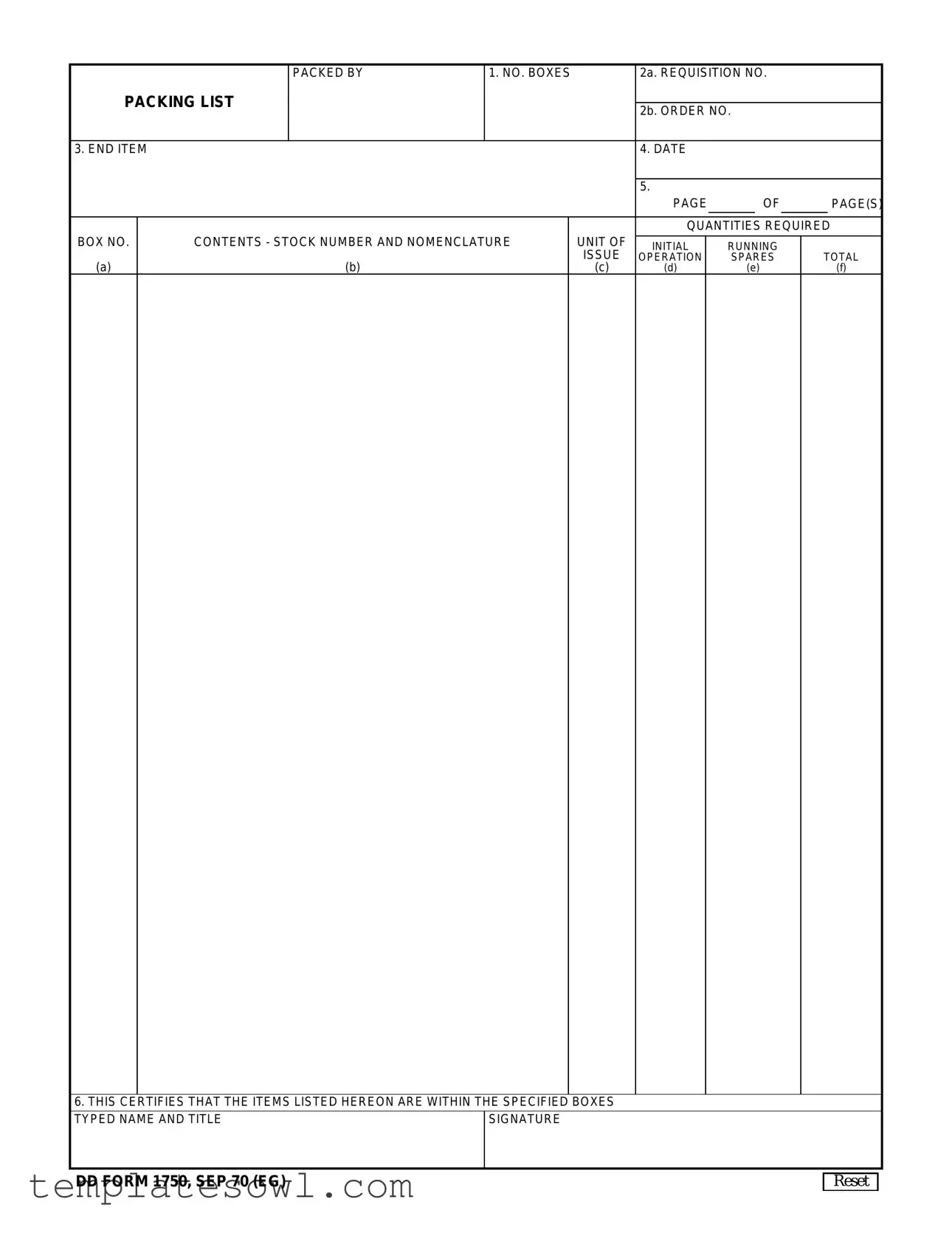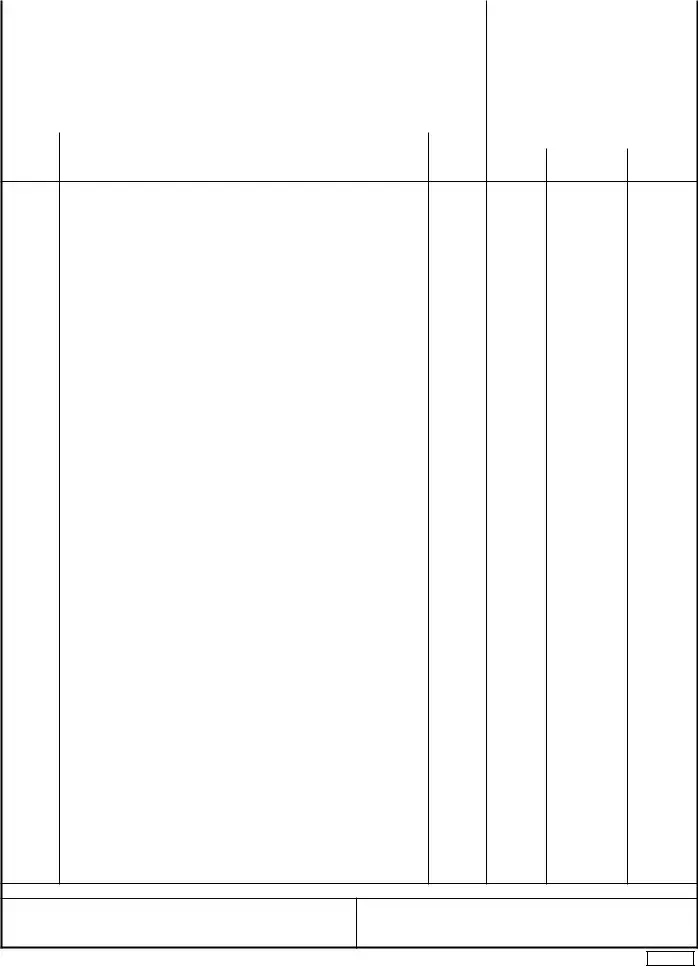What is the purpose of the DD Form 1750?
The DD Form 1750 is primarily used as a packing list for military shipments. It provides detailed information about the contents of shipment boxes, including the quantity and description of items. This helps ensure accountability and facilitates the correct distribution of supplies within the Department of Defense (DoD).
What information is included on the DD Form 1750?
The form includes several key components. You’ll find the number of boxes in a shipment, requisition and order numbers, the end item description, packing details, and unit quantities. It also features a certification statement that confirms the items listed are included within the specified boxes. This makes the form crucial for tracking and record-keeping purposes.
How should one complete the DD Form 1750?
To fill out the DD Form 1750 accurately, begin with the number of boxes you are shipping. Then, specify the requisition and order numbers as they appear on related documents. List the stock numbers and descriptions of items, detailing whether they are initial operation requirements or running spares. Always ensure that the date and your signature are included for certification purposes.
What should I do if items are missing from my shipment?
If you notice that items are missing from your shipment, first check the DD Form 1750 against the items you received. If discrepancies exist, contact your supply officer or logistics support to report the issue. It's important to use the requisition number for reference in any correspondence regarding the shipment, as this will expedite the resolution process.
Can I make changes to the DD Form 1750 after submission?
Changes to the DD Form 1750 should be minimized once the form has been submitted. If a need for adjustment arises, it’s best to communicate this to your logistics officer or appropriate authority as soon as possible. Any waivers for component parts due to shortages must be documented properly through established supply channels.


